Explore The Surreal Beauty Of Lingti Valley In Spiti In 2026
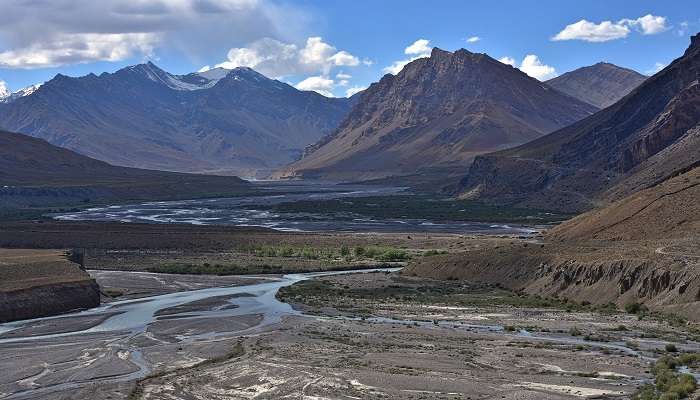
Located in the eastern part of the Spiti, in Himachal Pradesh, Lingti Valley is still one of the few unexplored gems of the Indian Himalayas. Nestled between the high mountains and ridges of the great Himalayas, this valley for trekkers, nature lovers and adventurers is one of the most magnificent terrains in the world. Surrounding the valley is Gya Peak which is the highest peak in Himachal Pradesh, located at the trijunction of Ladakh, Tibet and Spiti. Lingti Valley starts from the mountains of glacial origin and passes through many geological wonders throughout its course until it merges with the Spiti River.
Flora and Fauna Of Lingti Valley
Several unique types of Flora and Fauna are found in Lingti Valley. Some of the most commonly seen types of flora and fauna in Lingti Valley are mentioned below:
Flora
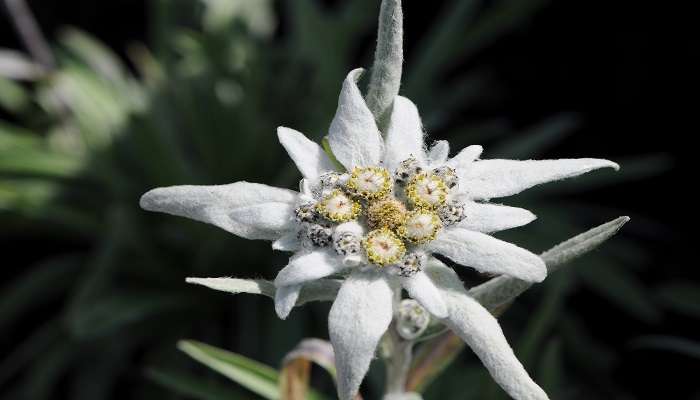
Lingti Valley is one of the peculiar valleys of the Spiti region, exhibiting a wide variety of plants that grow on the slopes of the Himalayas. During the summer, Alpine Meadows bloomed and had such flowers as Primula, Edelweiss, and Rhododendron. During the short growing season, when the vegetation is sparse, these perennials bloom and bring the colour back to the land. Barberry shrubs and Sea Buckthorn help feed the local wildlife, while Yarrow and Knotweed treat various ailments.
Must Read: Things To Do In Spiti Valley
Fauna
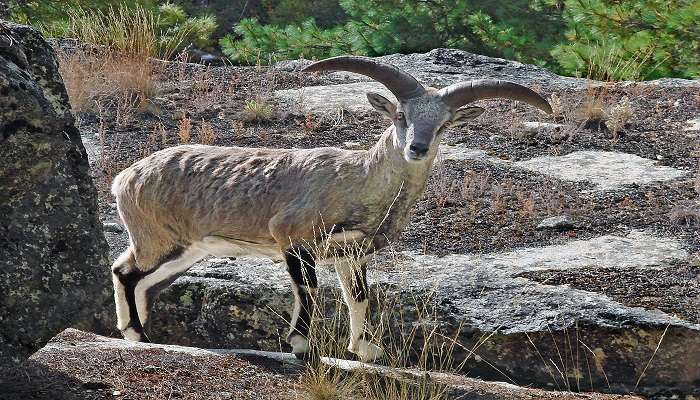
Various species of flora and fauna inhabit Lingti Valley because they have evolved to live in such conditions. The Snow Leopard is one of the most endangered felines that prefers living in the mountains, and its food consists of the Himalayan Blue Sheep and the Himalayan Marmot. Bird watchers are also likely to catch sight of the magnificent golden eagle and the pretty Snow Pigeon. The endangered species of Vulture and Himalayan Chough are also commonly spotted here in this high-altitude range. These unique species show that the valley is biologically diverse and the life-sustenance nature of one of the world’s most isolated zones. Preservation of this environment checks the future generational exploitation and enjoyment of Lingti Valley’s natural beauty.
Things To See In Lingti Valley
Lingti Valley is located in Spiti Valley and offers various beautiful locations. Here is the list of some beautiful things to see in Lingti Valley:
Lingti River: Lifeline of the Valley

The Lingti River, originating from the Parilungbi and Gya Peak glaciers, is the only water source for the valley. It winds through rough country, meandering in valleys surrounded by steep rocks and cliffs. As a natural water source, the river provides ecology and supports the flora and fauna in the region it passes through. Its shiny waters look like mirrors, and its surface mirrors the surrounding hills and rocks, making the view splendid.
Suggested Read: Places To Visit In Kaza
Lingti Waterfall: Nature’s Spectacle
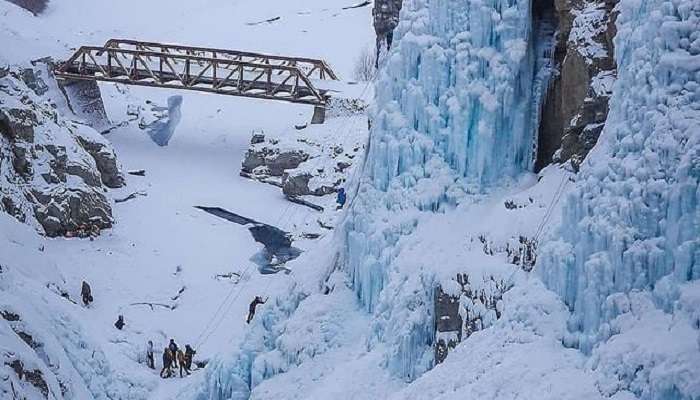
Lingti Waterfalls is located in the picturesque Lingti valley. Its water is clear and sparkling under the sun, bringing tranquillity in the middle of the foliage. Located near Lingti, this waterfall is ideal for trek breaks and a natural paradise for photography and nature lovers.
Nearby Attractions To Lingti Valley
There are a multitude of mesmerising and popular tourist attractions near Lingti Valley that are worth checking out. Some of the most popular tourist attractions near Lingti Valley are mentioned below:
1. Gya Peak
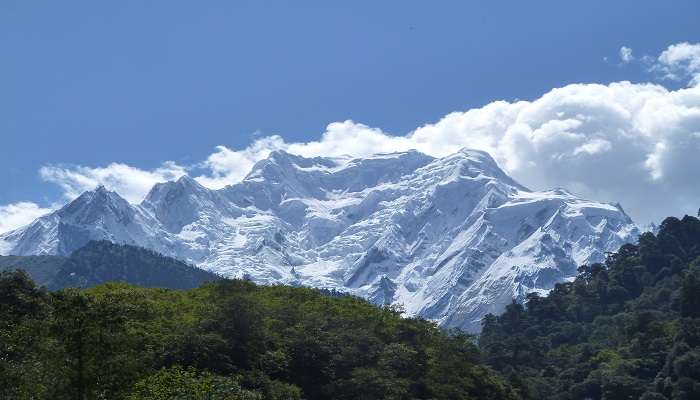
Gya Peak is the highest mountain in Himachal Pradesh and lies in the trijunction of Ladakh, Tibet, and Spiti at 6,794 meters. This peak provides spectacular views of nearby areas, often requiring a challenging climb to reach the summit. The ascent offers stunning views of Ladakh, Tibet and all of Spiti. This is evident since glaciers from Gya Peak form the Chaksachan Lungba, which is part of the Lingti River, thus playing a very significant role in the hydrological network. It is very remote, and the climb is strenuous, which only makes it suitable for serious climbers who want to capture the actual image of the Himalayas.
Best Time To Visit: May-June
Distance from Kaza: 45.2 KM
Suggested Read: Spiti Valley Hotels
2. Parilungbi Peak
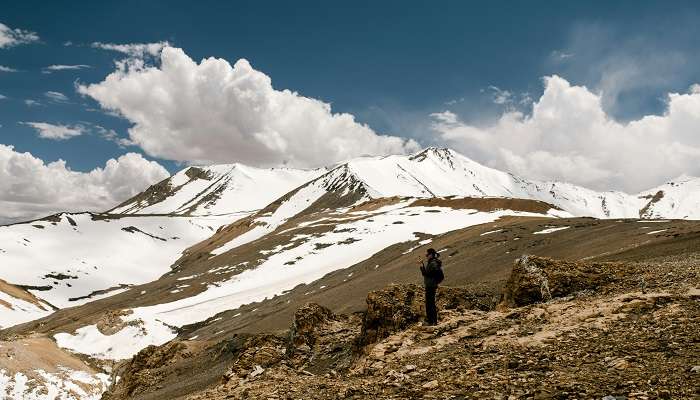
Parilungbi Peak stands at 6,166 meters and is considered a tough climb and favoured by professional climbers. Steep slopes, sharp ridges, and glaciers usually characterize the ascent. The glaciers present at the peak contribute to the region’s hydrological process, yielding the Lingti River. Geographically, Parilungbi is located deeply in the forests and has a rugged and rocky environment that gives off a sense of wilderness and isolation. It rewards the climbers with panoramic views of the other Himalayan peaks and a feeling of accomplishment, which is why adventure seekers and enthusiasts mainly climb it.
Best Time To Visit: May-June
Distance from Kaza:30.1 KM
3. Shilla Peak
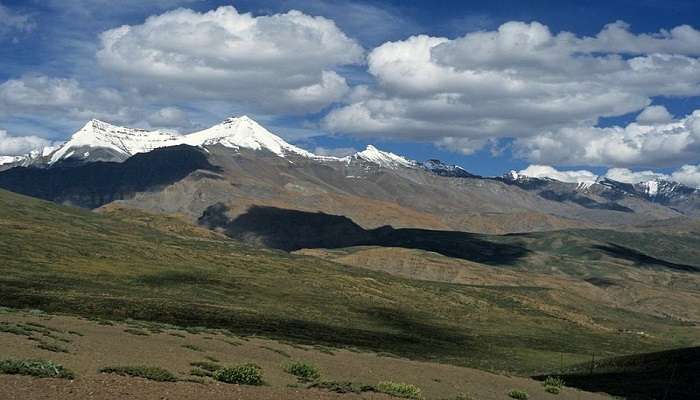
Shilla Peak, with a height of 6,132 meters, provides the most beautiful views in the area. It runs as part of the ridge, creating the western and southern boundary of Lingti Valley. Shilla elevates your experience of mountain climbing because the terrain is steep and highly challenging. It provides the opportunity to enjoy the view of various valleys, snow-capped mountains and the entire range of the Himalayas. The glaciers of the Shilla Peak directly contribute to the tributaries of the Lingti River, making it an essential location for the environment. The climbing is secluded, thus enabling the climbers to be in a natural setting and enjoy the beauty of Spiti.
Best Time To Visit: May-June
Distance from Kaza: 24.5 KM
Suggested Read: Bhimkali Temple
4. Chau-Chau Khang Nilda
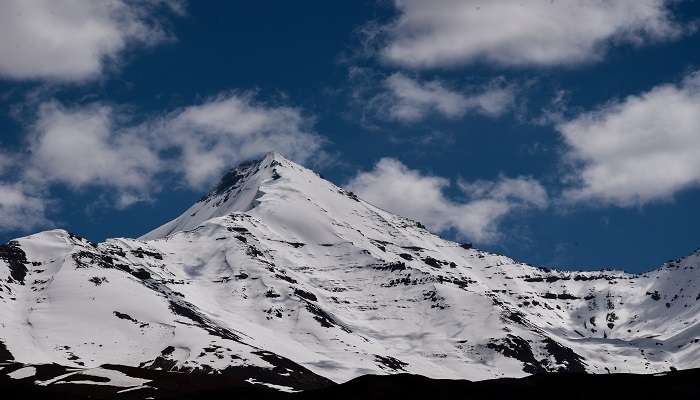
Chau-chau Khang Nilda, also called the White Pyramid, measures 6,380 meters in height and possesses a peculiar snowy appearance. Photographers and mountaineers often love the peak. It does take technical skills and acclimatization to the higher terrains to be able to climb it. The summit provides panoramic views of the Spiti Valley, the Tibetan plateau and neighbouring ranges of the great Himalayas. Chau-chau Khang Nilda glaciers are other essential water resources that provide water to the Lingti River. Due to its natural environment and aesthetic scenery, visitors regard it as a destination for adventure in the remote Himalayas.
Best Time To Visit: May-June
Distance from Kaza: 13 KM
5. Tserip and Kuwa Peaks
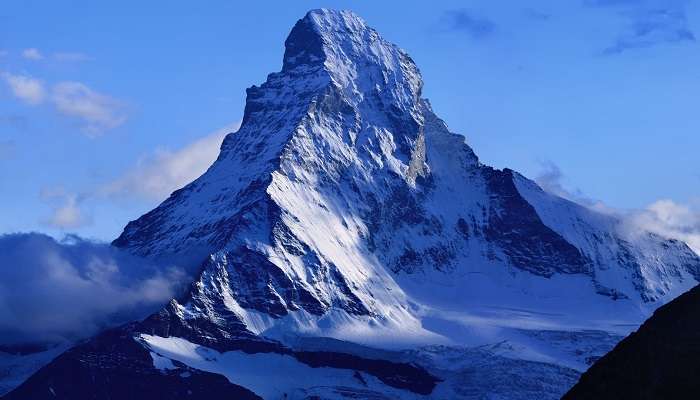
The peaks of Tserip (5974 meters) and Kuwa (6008 meters) lie on the southern rim of Lingti Valley. These somewhat untouched peaks are also known for its less strenuous treks through flawless meadows, steep ridges, glaciers and valleys. The ascents are less complicated but can only be completed with adequate levels of fitness and acclimatized physical condition. It also offers excellent views of the surrounding valleys and other mountains at the top of the summits. Unknown and easily accessible, they guarantee a quiet and close-to-nature experience any adventurer may desire in the Himalayas.
Best Time To Visit: May-June
Distance from Kaza: 40-50 KM
Suggested Read: Lunar Eclipse In Spiti
Things To Do in Lingti Valley
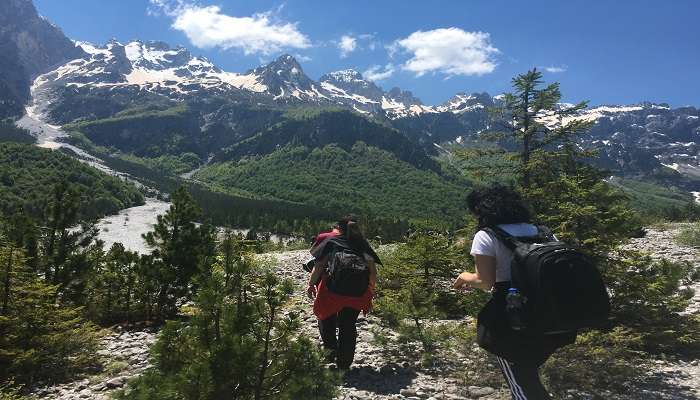
Trekking: Lingti Valley has some of the most breathtaking trekking paths in the Himalayan range. The trek from Kaza to Lingti offers even more stunning views, vistas, alpine meadows and high-altitude passes. The Gya Peak, Base Camp trek, is spectacular and is especially enjoyed by experienced trekkers.
Wildlife Spotting: Wildlife includes snow leopards, blue sheep, and several birds found in the valley. Pack your binoculars and cameras as you may be privileged to capture these fascinating creatures in the wild.
Photography: Lingti Valley is perfect for photographers as the view is mesmerizing. You can capture the majestic landscapes and mountains, the stunning clarity of the streams, colourful vegetation and animal life. The early morning and evening lights are ideal for capturing beautiful moments.
Cultural Exploration: Trek to the nearest villages to learn about the Spiti people’s local customs and way of life. Due to its seclusion, the valley has retained intact cultural values such as monasteries, buildings, and festivals.
Accommodation and Eateries.
Lingti Valley is relatively offbeat, with limited options for staying and eating out, but Kaza, being in the vicinity, is a decent place to find lodging and eating places.
Accommodation
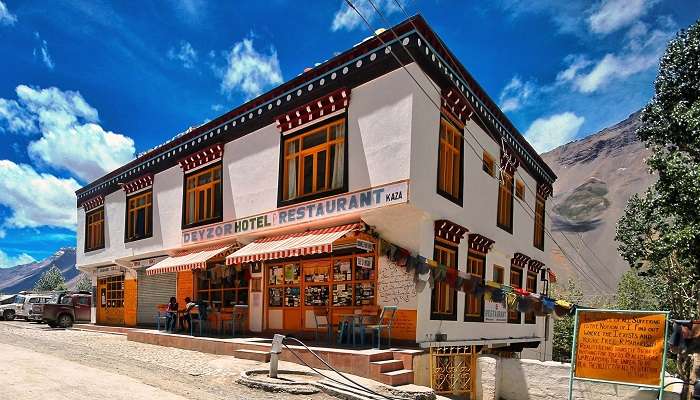
Hotel Deyzor: A small but frequently booked hotel that provides spacious accommodations and attentive service in Kaza.
Spiti Heritage: Praised for having well-preserved ancient houses and buildings combined with the availability of most of the essential facilities.
Sakya Abode: A cosy accommodation with warm employees and an inviting environment.
Suggested Read: Best Places To Visit In Himachal Pradesh
Eateries
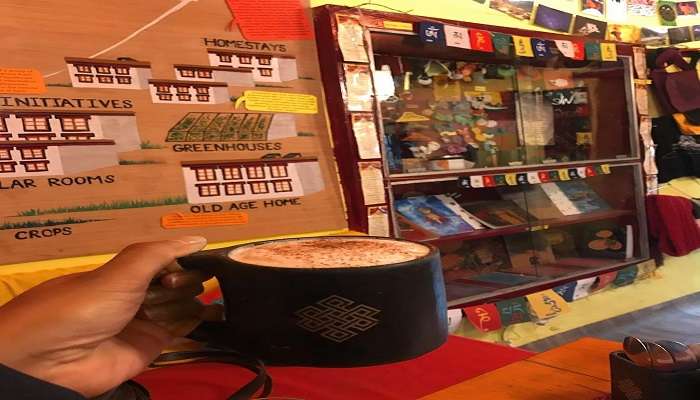
The Himalayan Café: It offers traditional foods from the Spitian people and cuisines from around the world.
Sol Café: Popular for its warm atmosphere and aromatic coffee, this cafe is a great place to enjoy a leisurely rest.
Taste of Spiti: This place serves some local delicacies and ethnic dishes.
Best Time To Visit
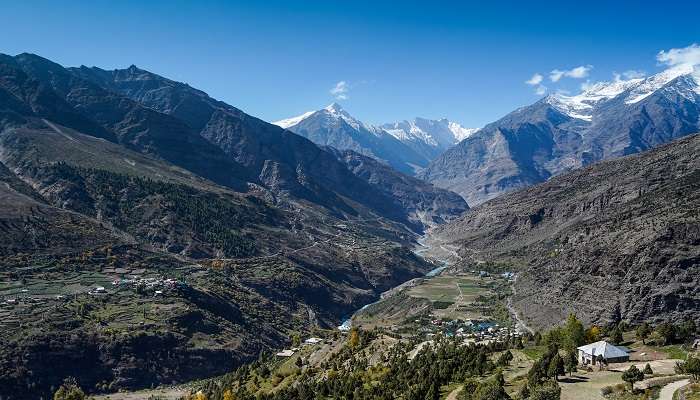
The best time to visit Lingti Valley is from April to October because the area is best suited for trekking in summer. This is the best season to hike since the temperature is moderate, and no snow is on the ground to block the paths. The valley is lovely, with flowers blooming all over, and the sky is clear for mountain trekking and photography.
Suggested Read: Homestays In Reckong Peo
How To Reach Lingti Valley
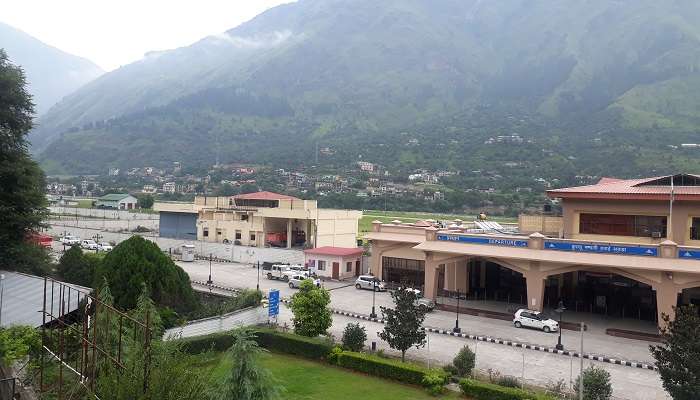
By Air: The nearest airport is in Bhuntar, which is in the Kullu district and is nearly 245 km from Kaza, the main town of Spiti Valley. Another 60 km from Kaza is the Lingti Valley. The second nearest airport is in Chandigarh, which is approximately 520 km away from Kaza.
By Train: The nearest railway station is Shimla, which is about 445 km away from Kaza. The second choice is Chandigarh Railway Station, which is more accessible and almost 500 km away.
By Road: Road transport is one of the most preferred means of accessing the Spiti Valley. There are two main routes: There are two main routes:
- Via Manali: This route is relatively shorter but more rigorous, as it climbs the Rohtang Pass and the Kunzum Pass at relatively high altitudes. The distance by road from Manali to Kaza in Spiti Valley is approximately 200 km.
- Via Shimla: This route takes longer to cover the same distance, but it is also picturesque and has fewer chances of being closed off. The distance between Shimla and Kaza is roughly 450 kilometres.
Further Read: Homestays In Sissu
Lingti Valley is still a relatively undiscovered part of Spiti and a treasure trove of natural beauty, adventurous activities and cultural significance. With poor accessibility, a remote location is just a bonus that cements its reputation as a destination for those seeking a unique experience. Whether you are hiking over its rocks, photographing its beauty or exploring its cultures, Lingti Valley is a fascinating experience of a holiday trip to Himachal Pradesh.
For our editorial codes of conduct and copyright disclaimer, please click here.
Cover Image Credit: Timothy for Wikimedia Commons
Frequently Asked Questions About Lingti Valley
When is the best time to visit Lingti Valley?
Although it is good to visit Lingti Valley at any time, the best time is during April up to October. These are the months when the climate is comparatively moderate. The snow has vanished which makes hiking and other activities easier.
What is the best way to get to Lingti Valley from Kaza?
To get to Lingti Valley from Kaza one can either hire a taxi or join an organized trekking party. The journey consists of a drive through rocky and steep territories that are at a high altitude.
Do I need to arrange for a guide when accessing Lingti Valley?
Yes it is logical to hire a local guide since they are more familiar with the area than most people. The trails can often be rugged and not well-blazed, and the presence of a guide minimizes the risk factor and also provides historical and cultural context to the landscape.
Which kinds of wild animals are likely to be found in Lingti Valley?
Lingti Valley Trekking might just reward you with views of some rarely seen animals such as the Snow Leopard, the Himalayan Blue Sheep, and the Himalayan Marmot. For bird watchers, they will be able to see the Golden Eagles and Snow Pigeons.
Is it possible to find a place to stay in Lingti Valley?
There are few lodging structures within Lingti Valley itself. The majority of travellers spend their nights in Kaza, where there are many hotels and guest houses, and can organize tours to Lingti Valley the next day.
People Also Read:
Niti Valley Spiti Valley Karsog Valley

With a passion for exploring and travelling to the roads long forgotten, experience the world through enthralling stories and adventures. Join me as I share my experiences at some of the world’s most popular tourist destinations and quench that pestering curiosity with something exciting!











